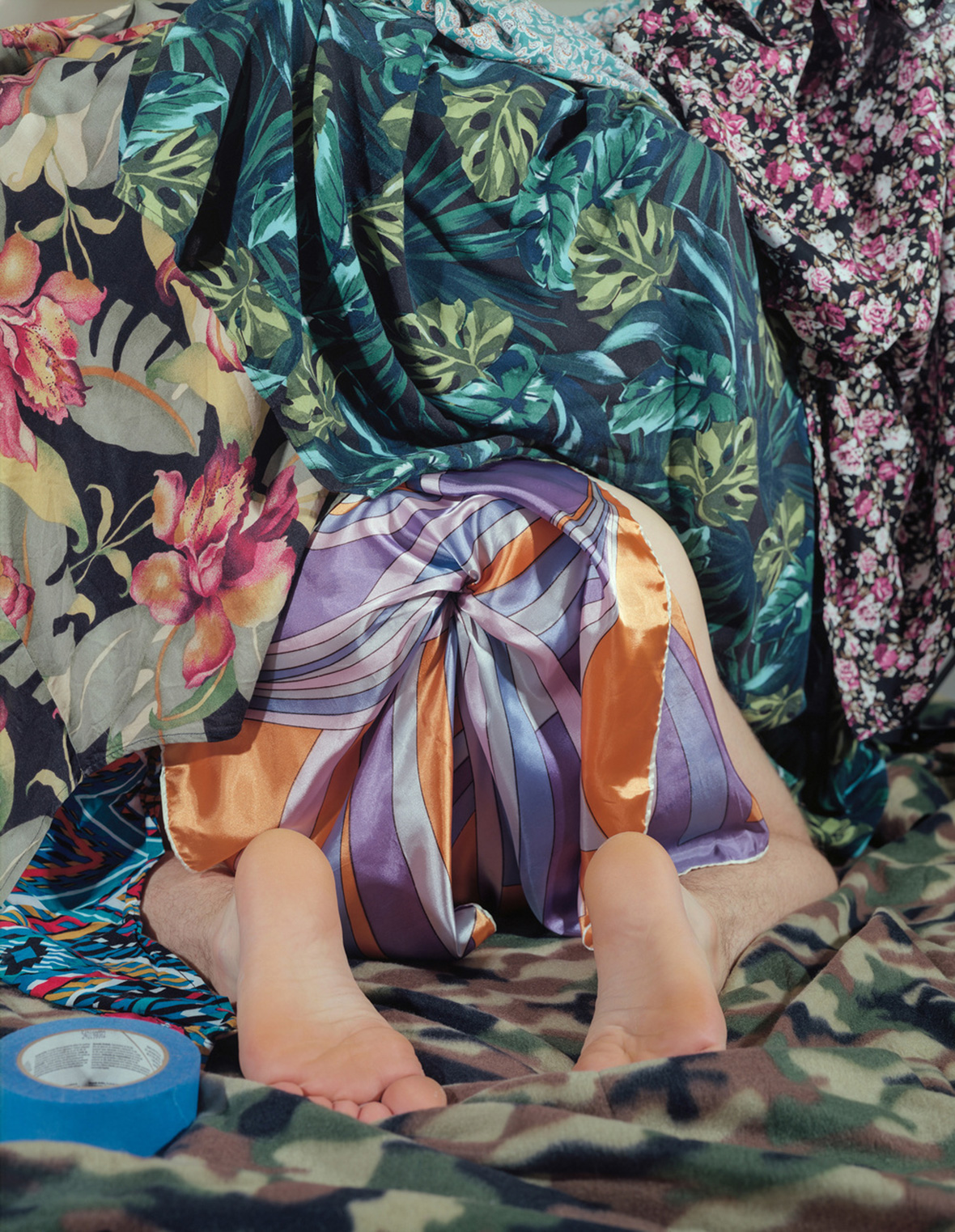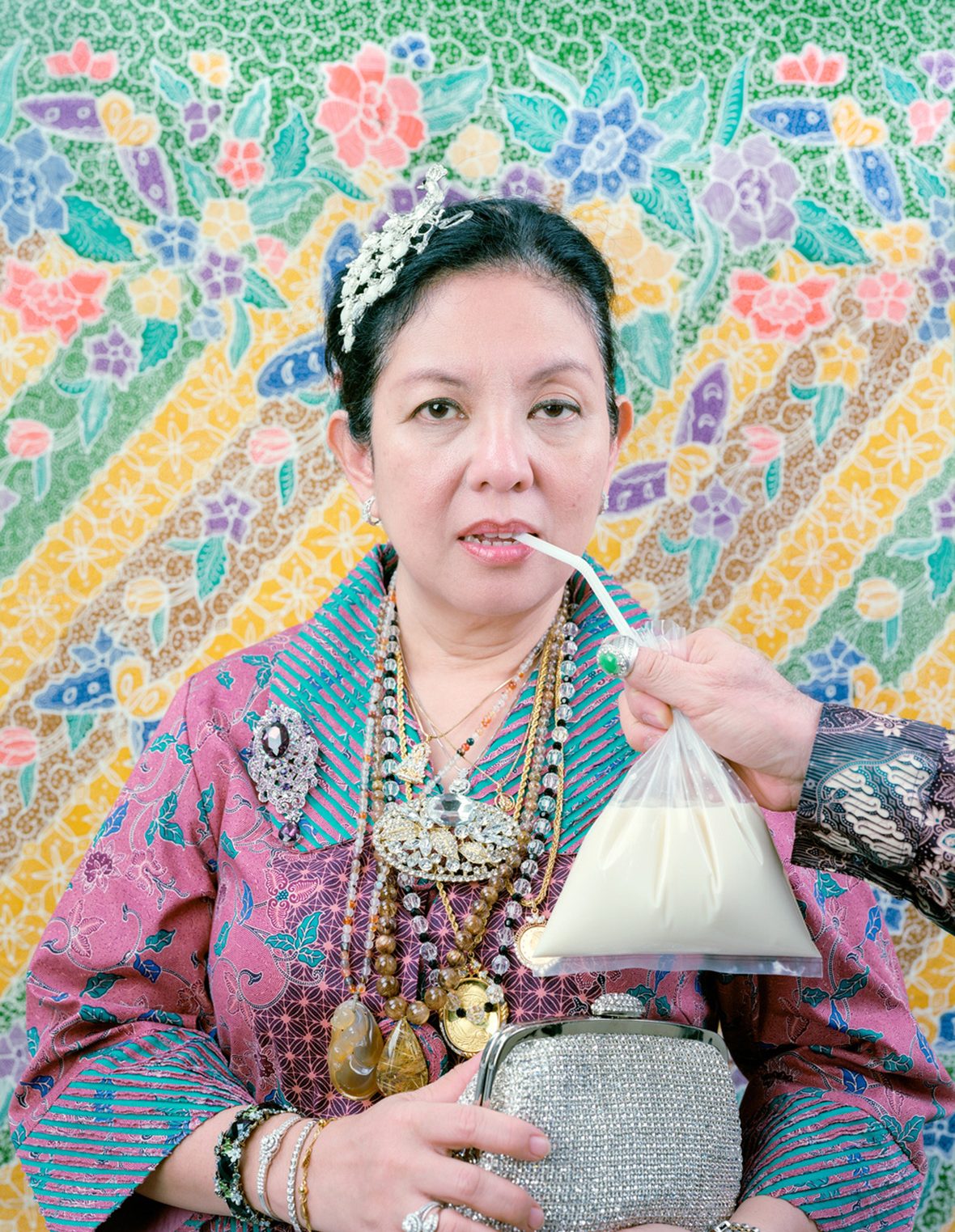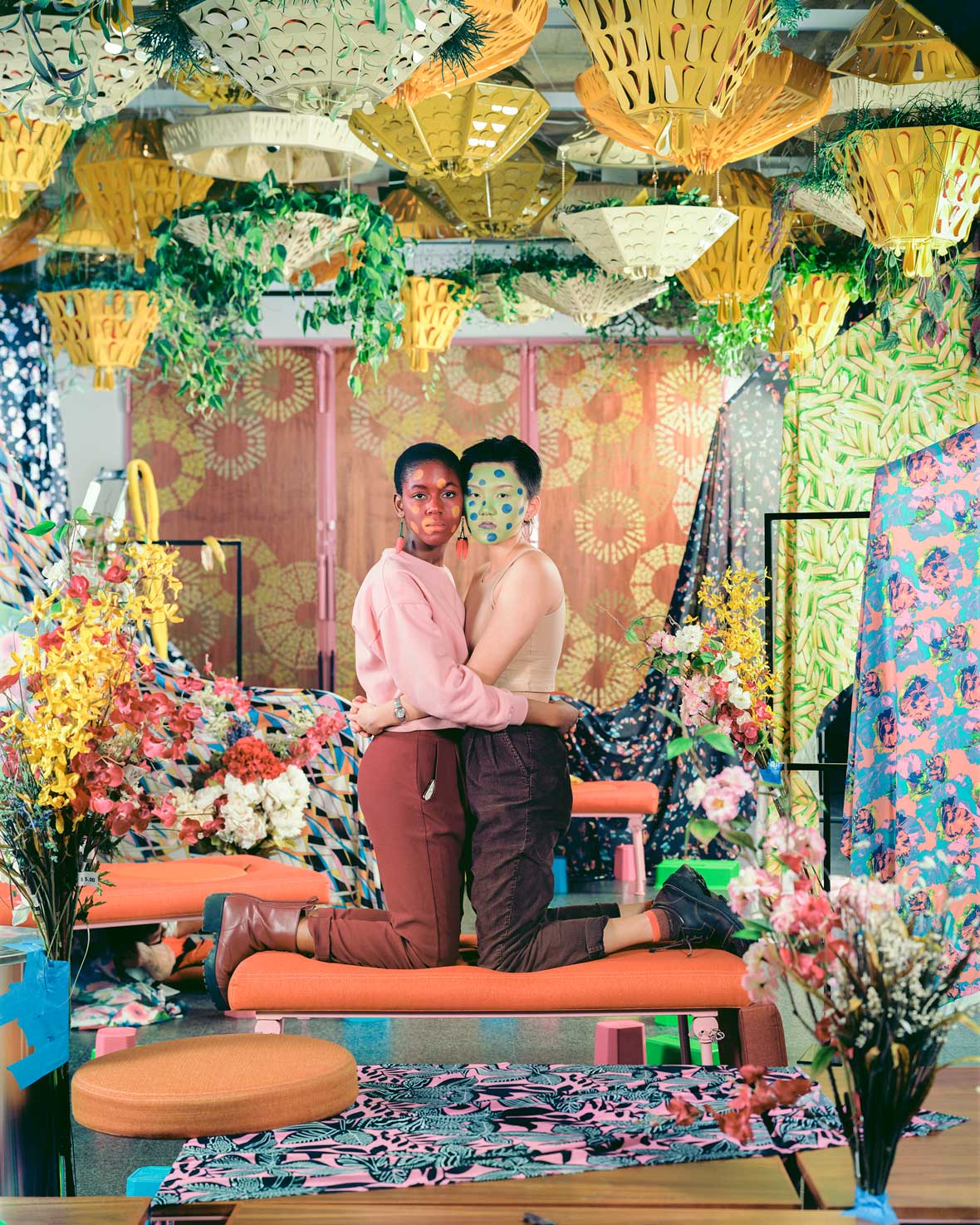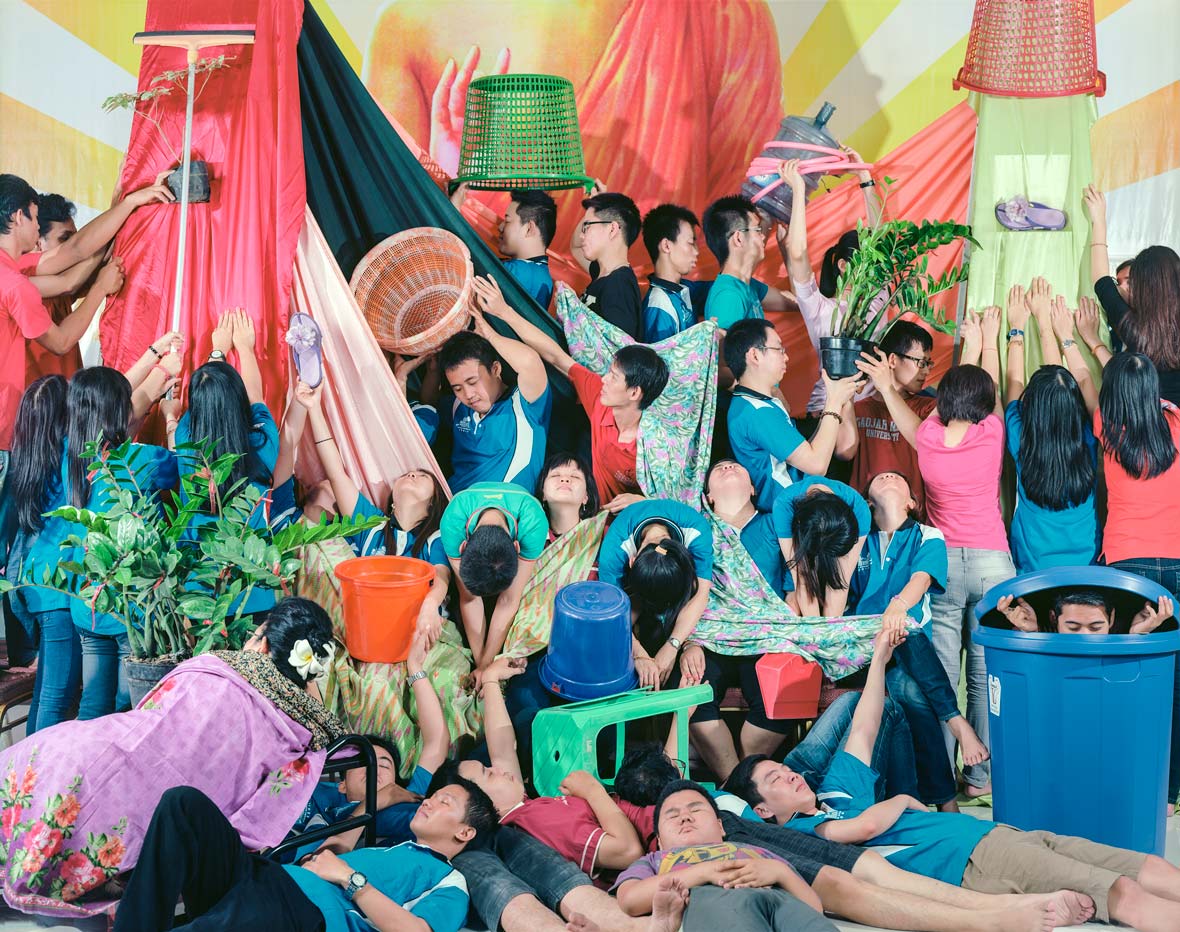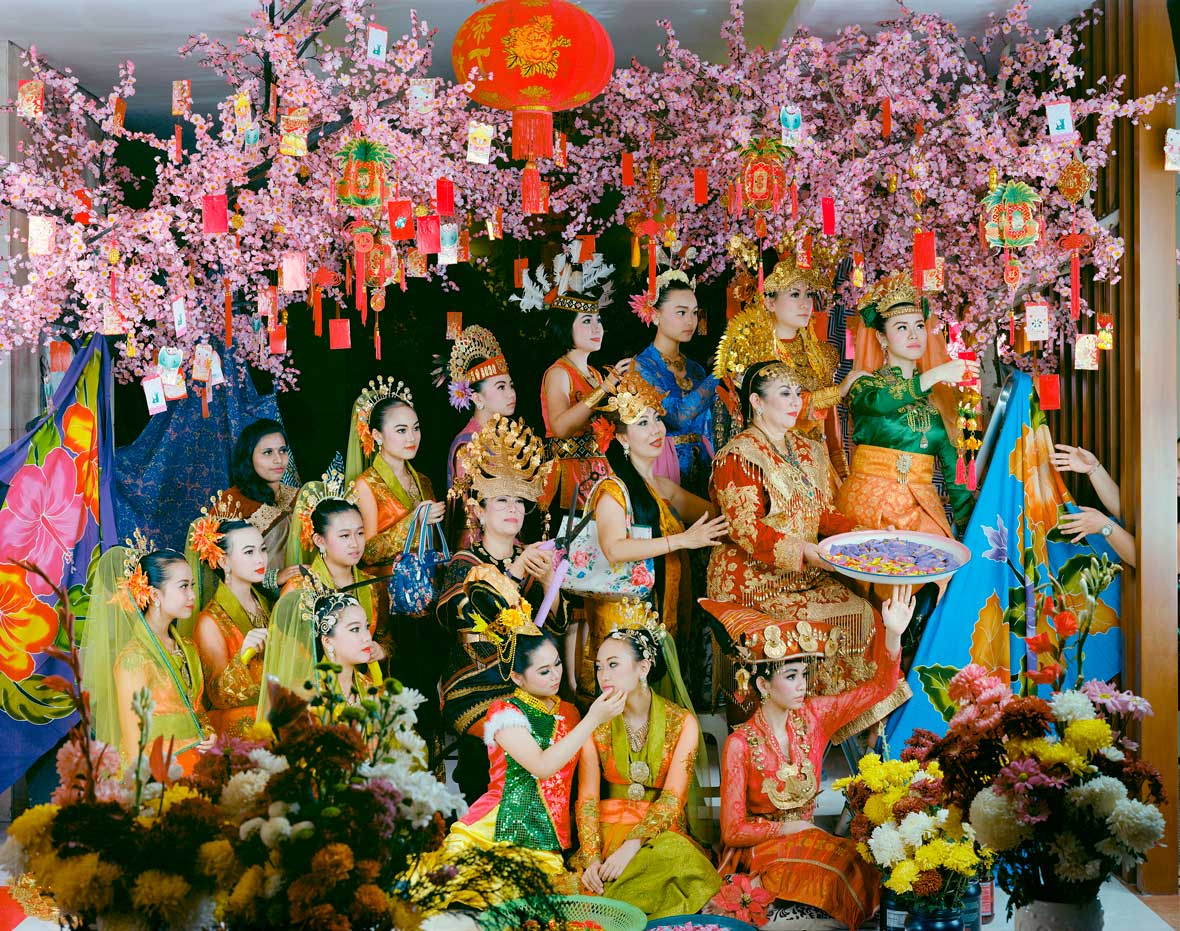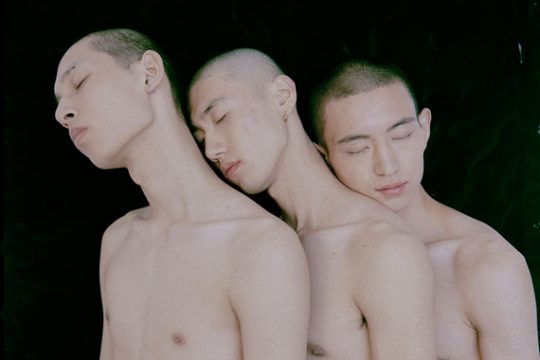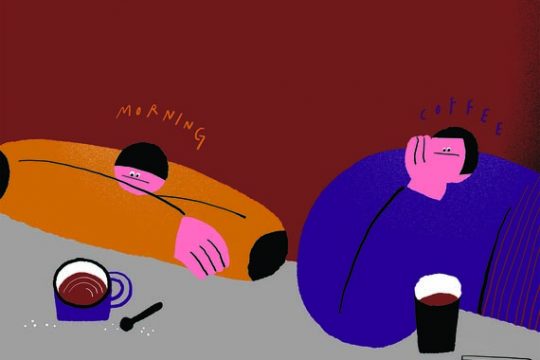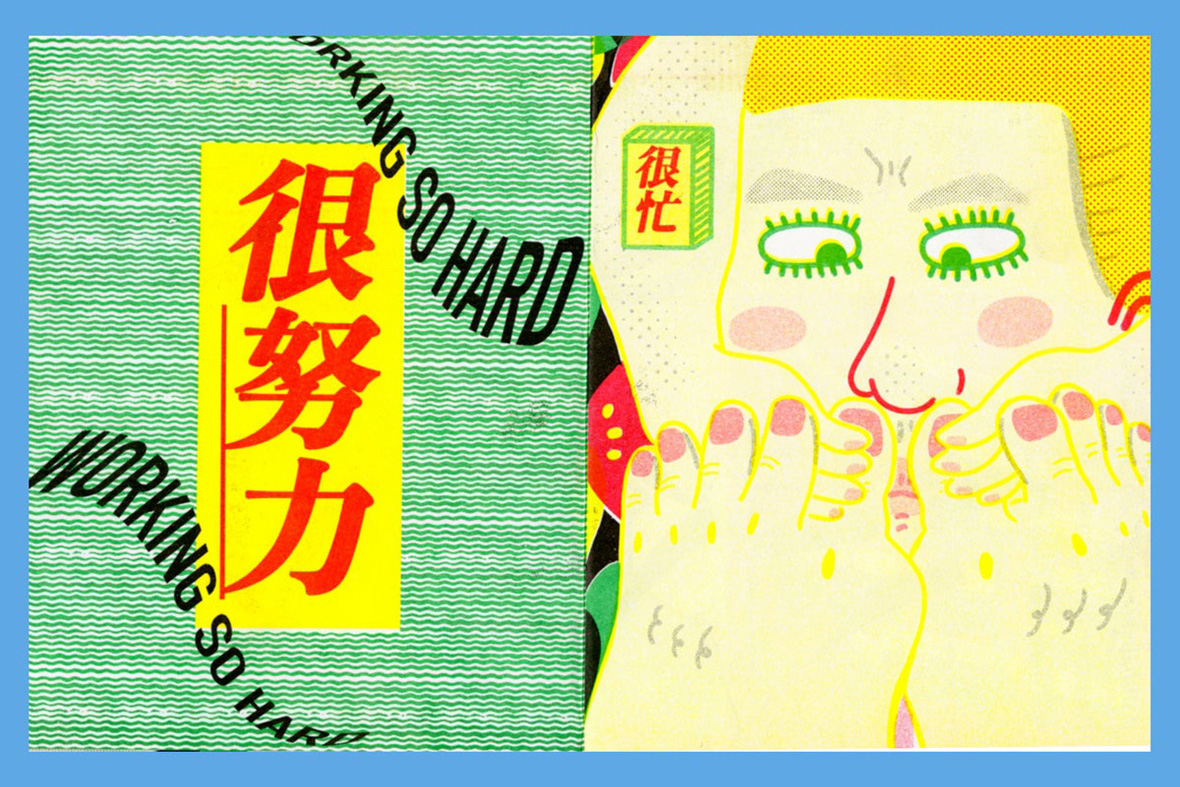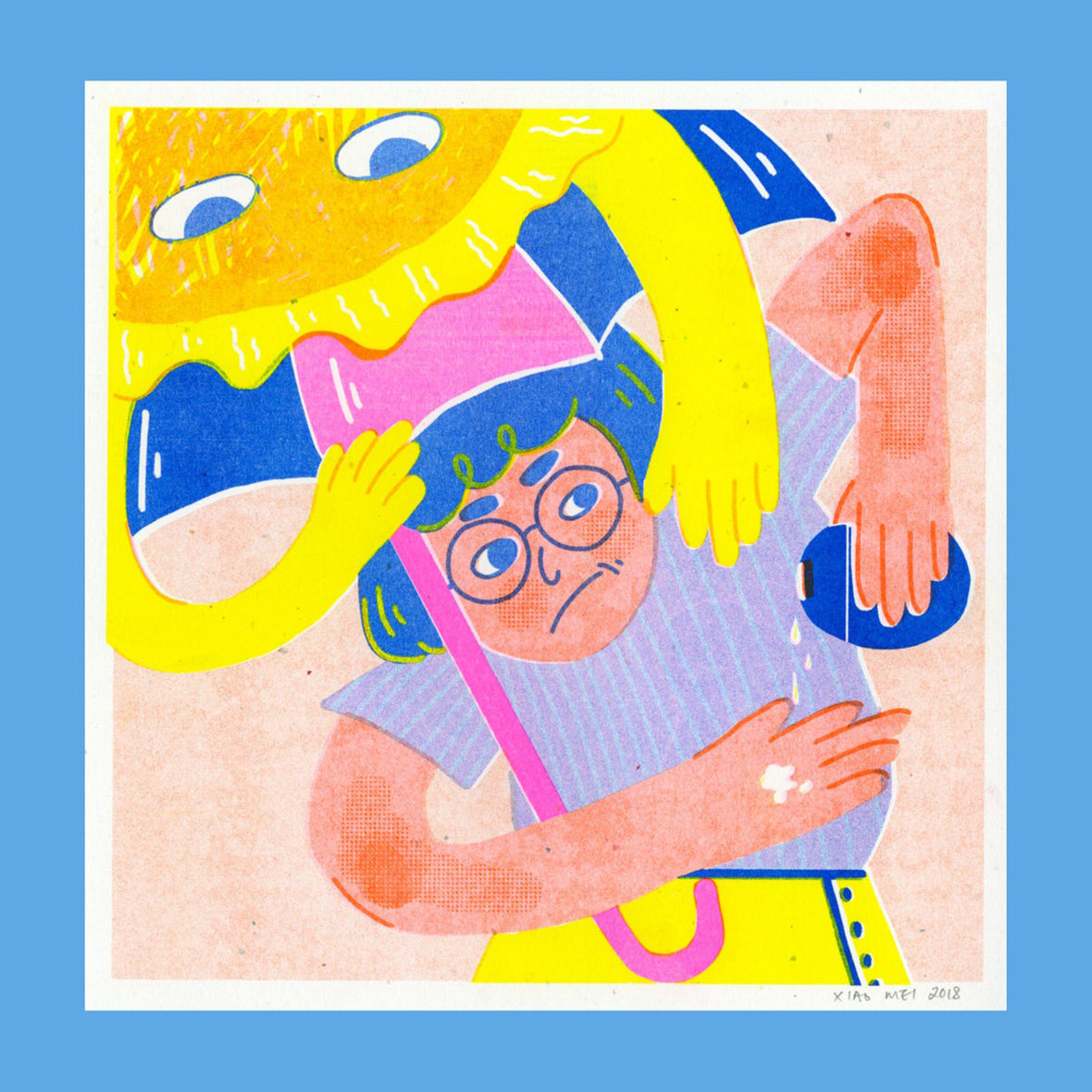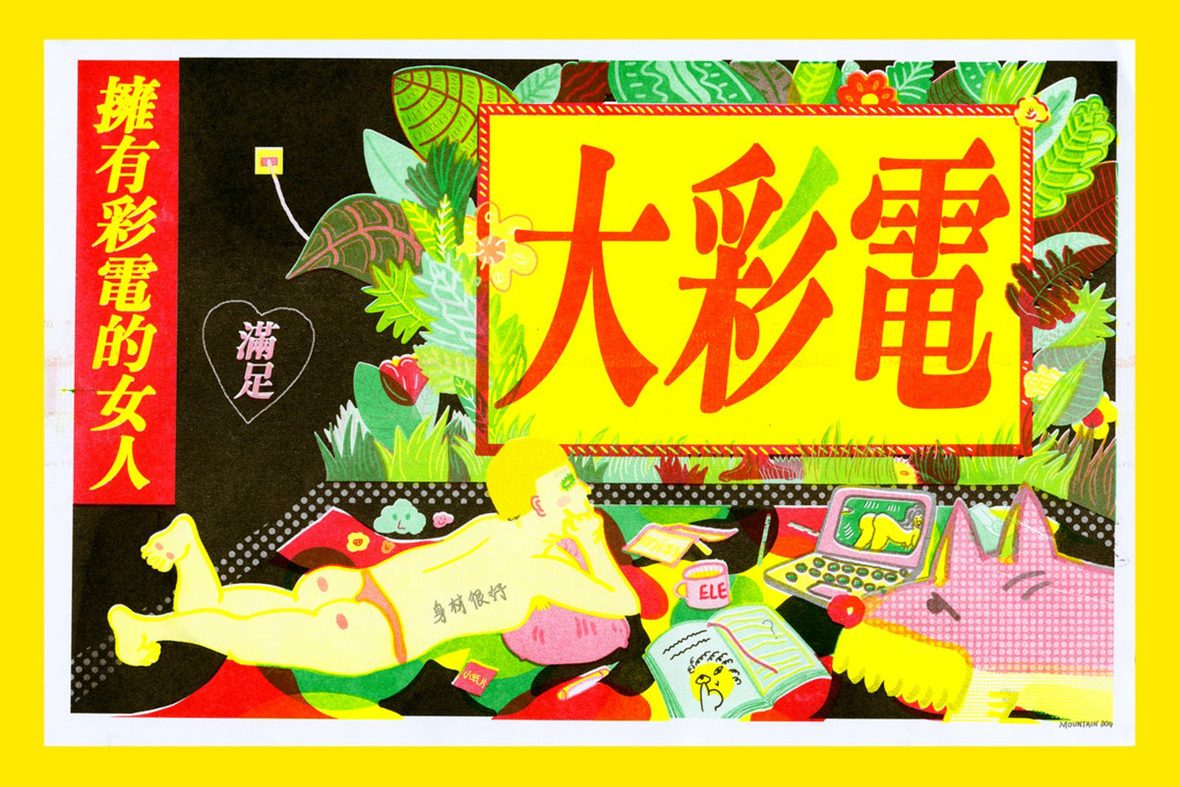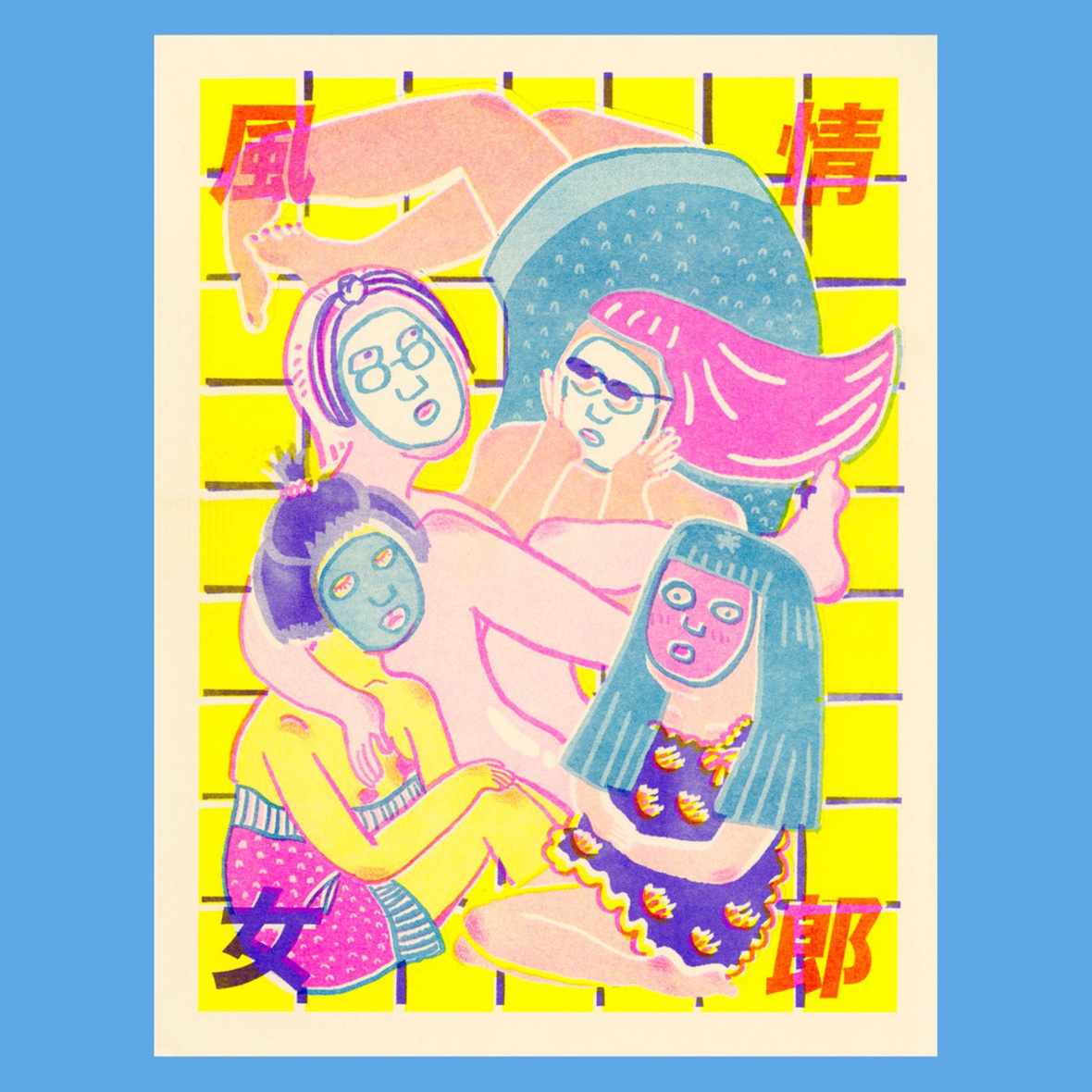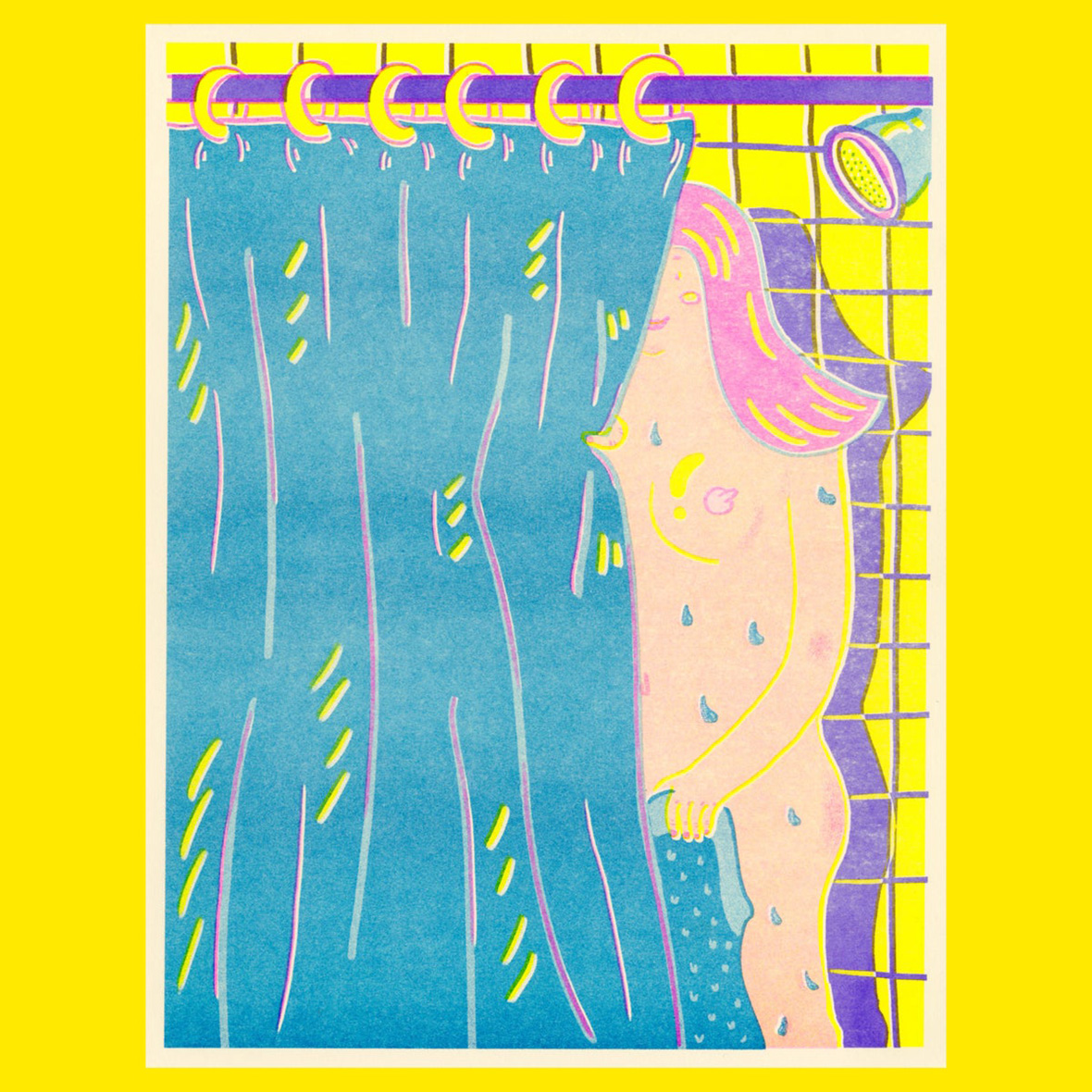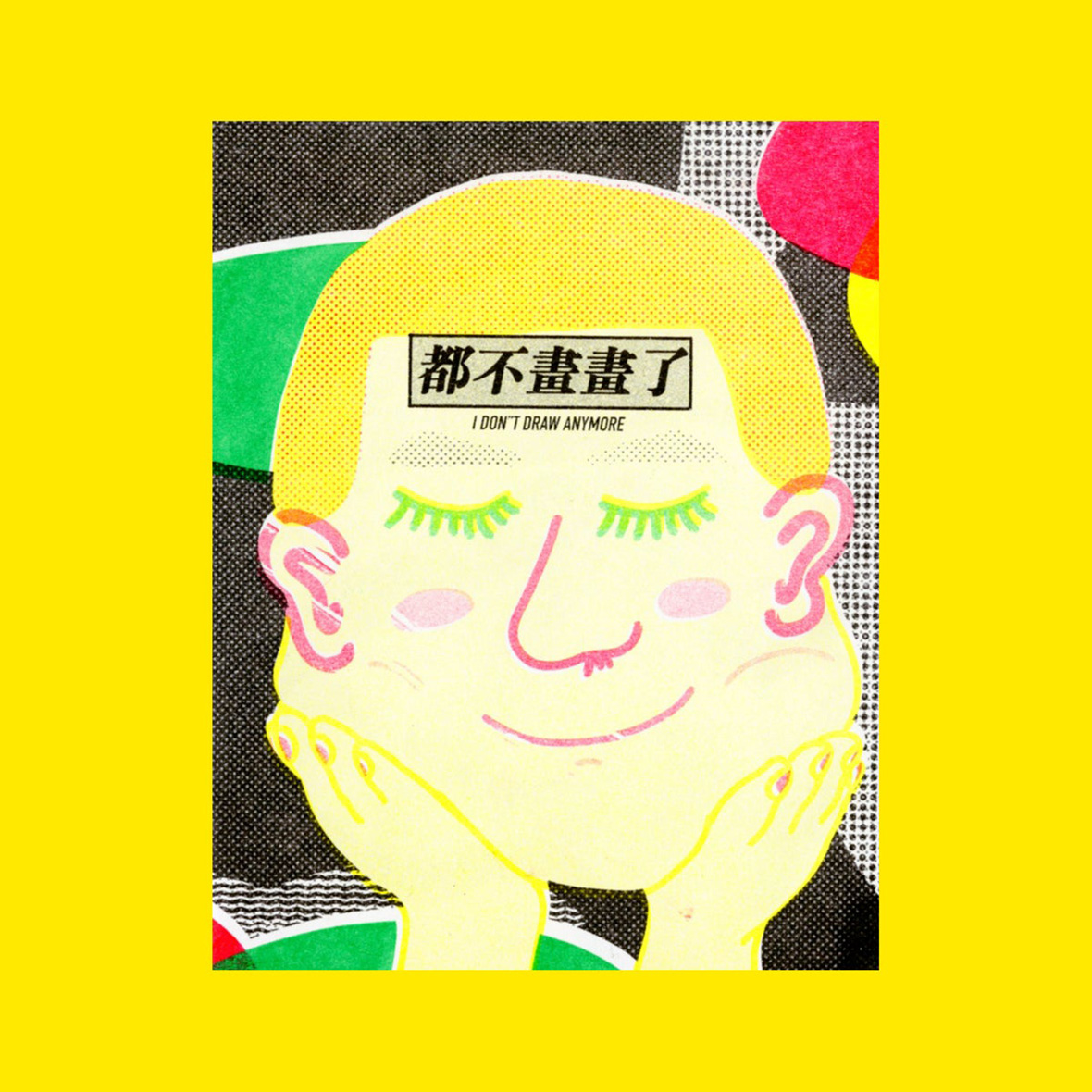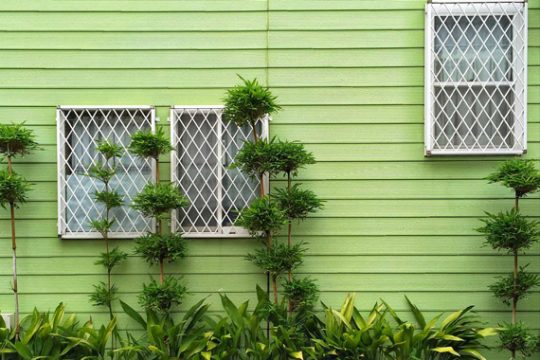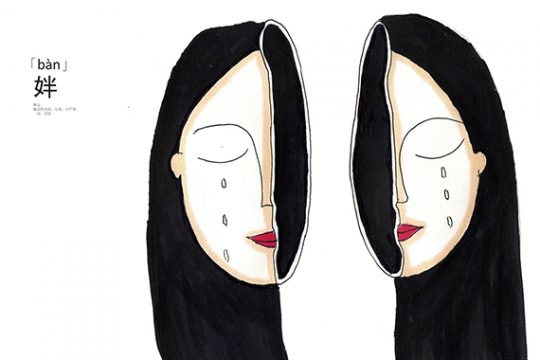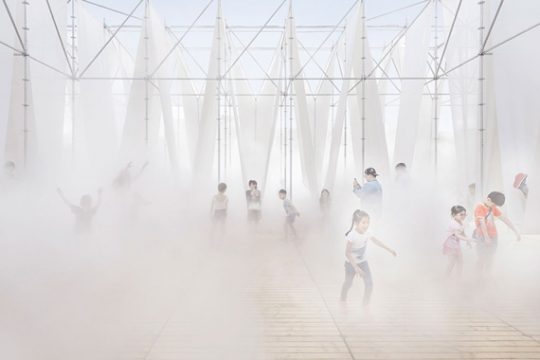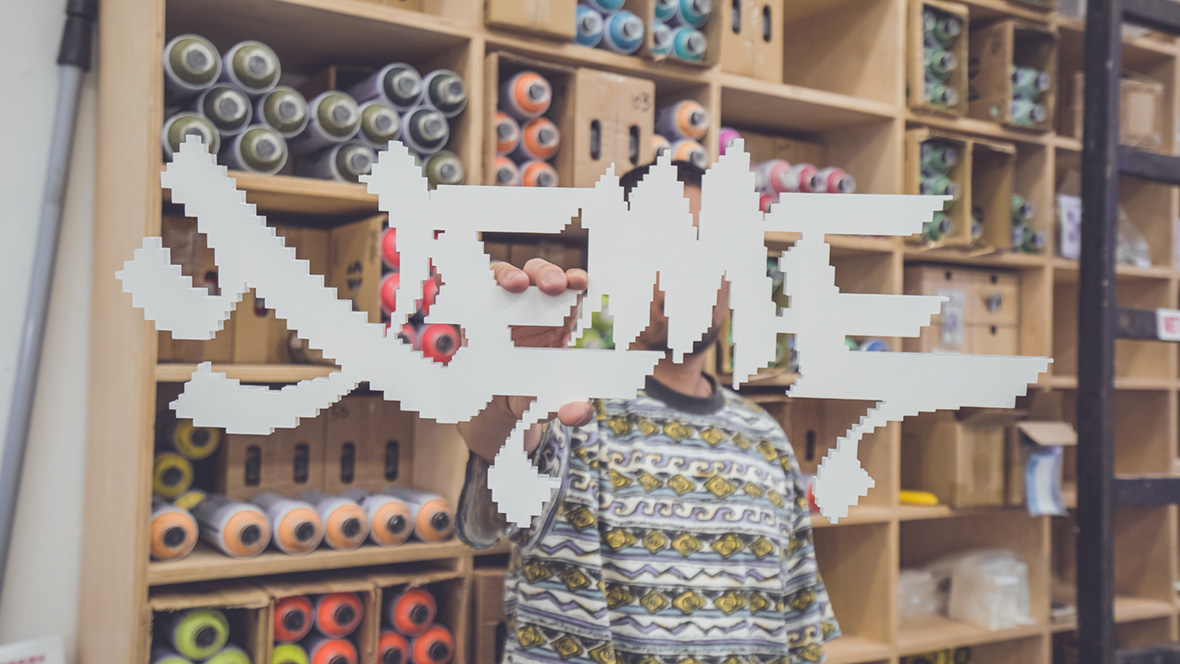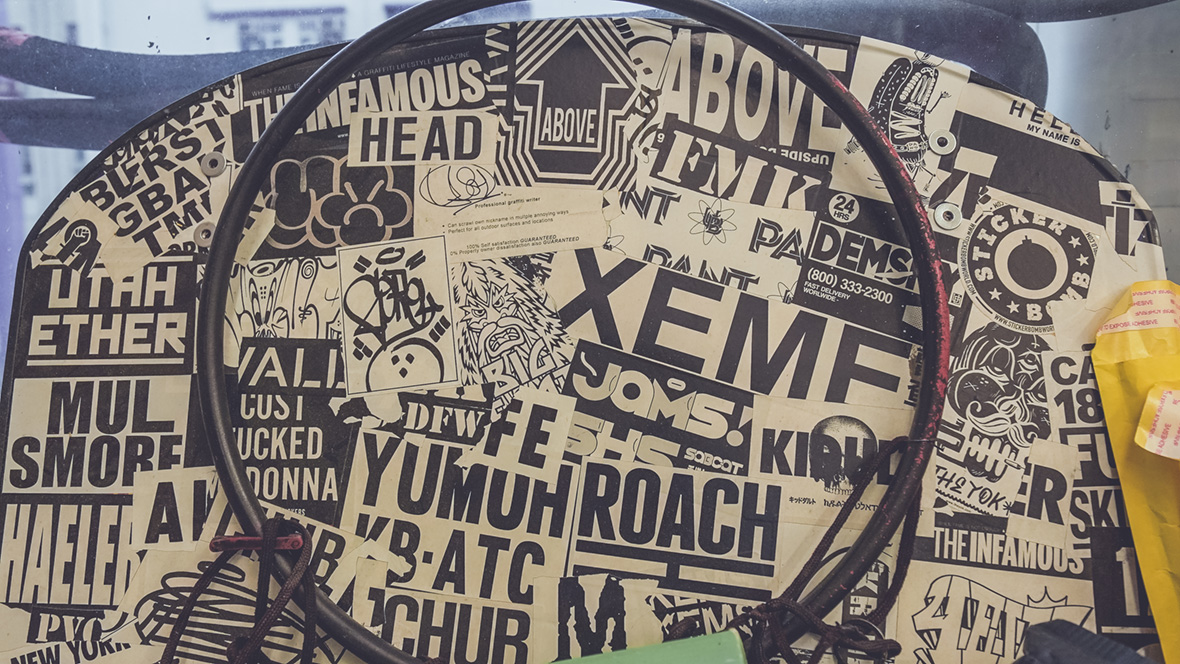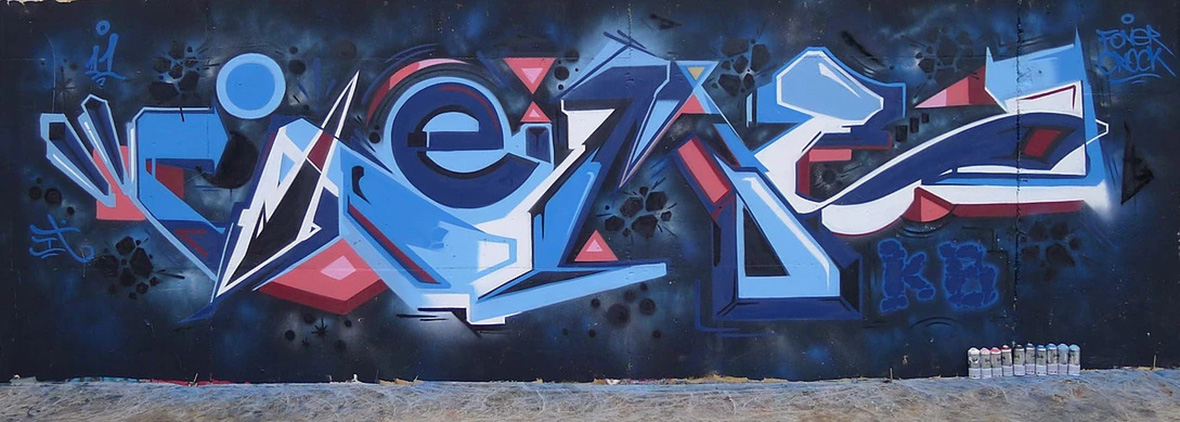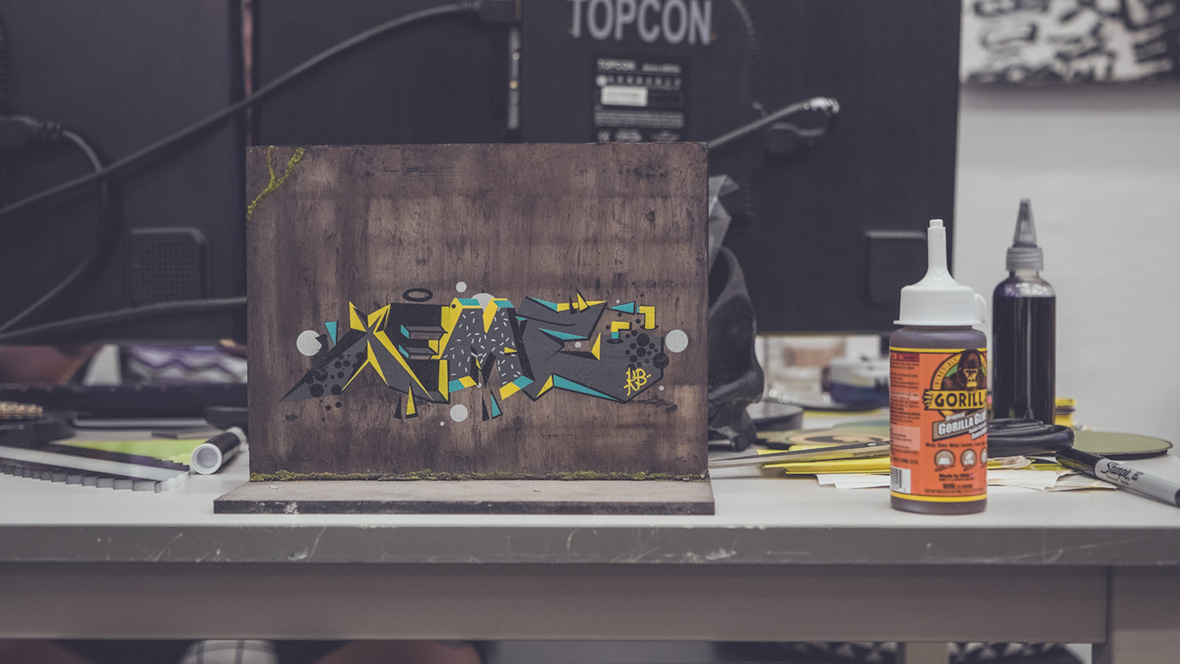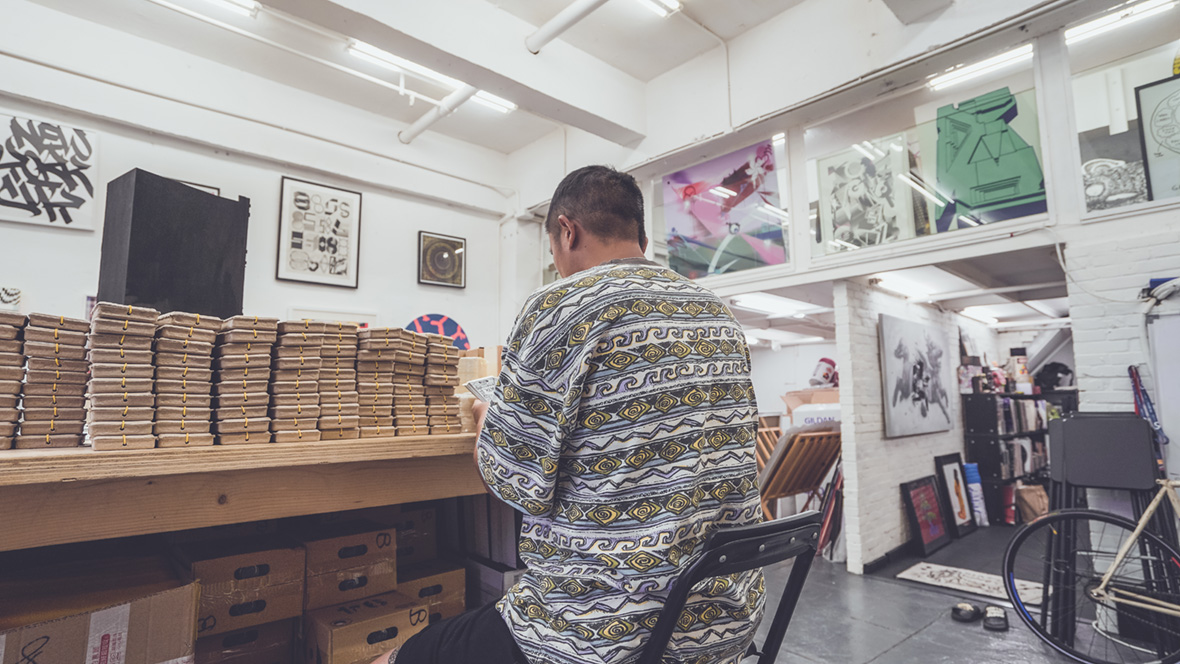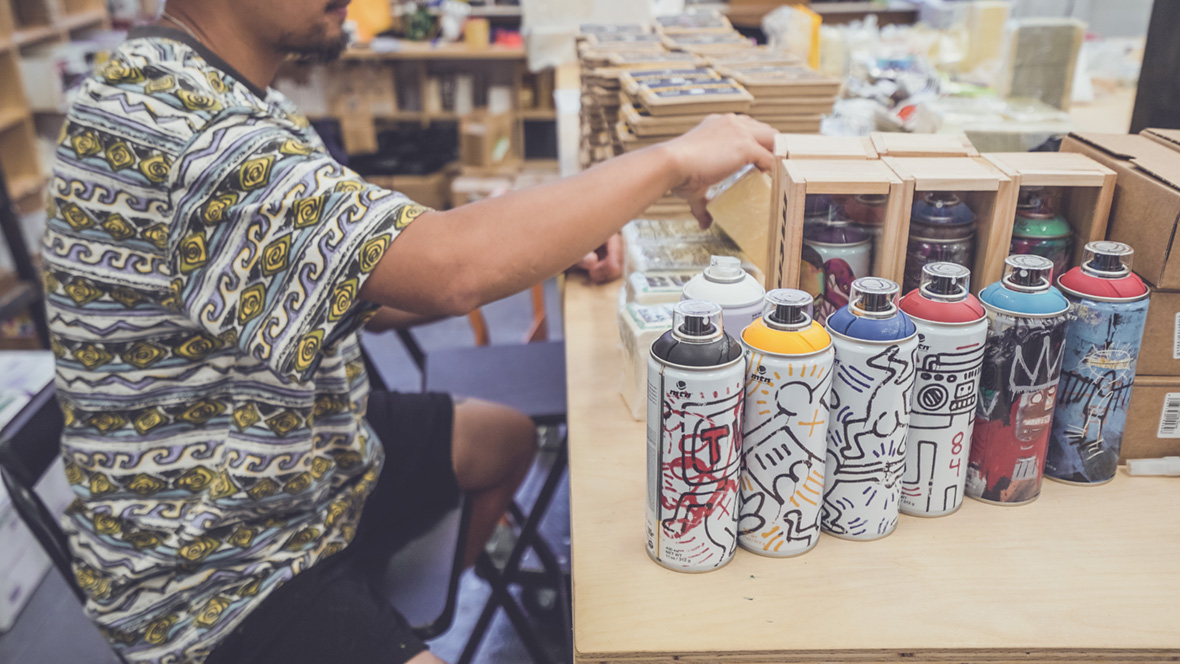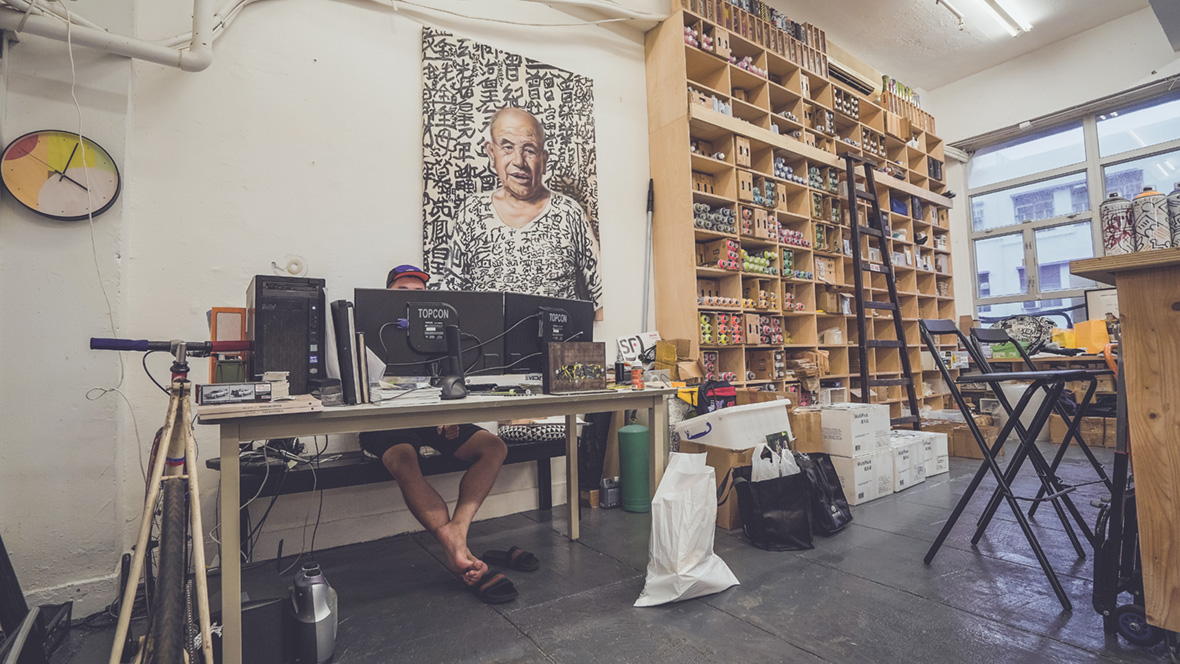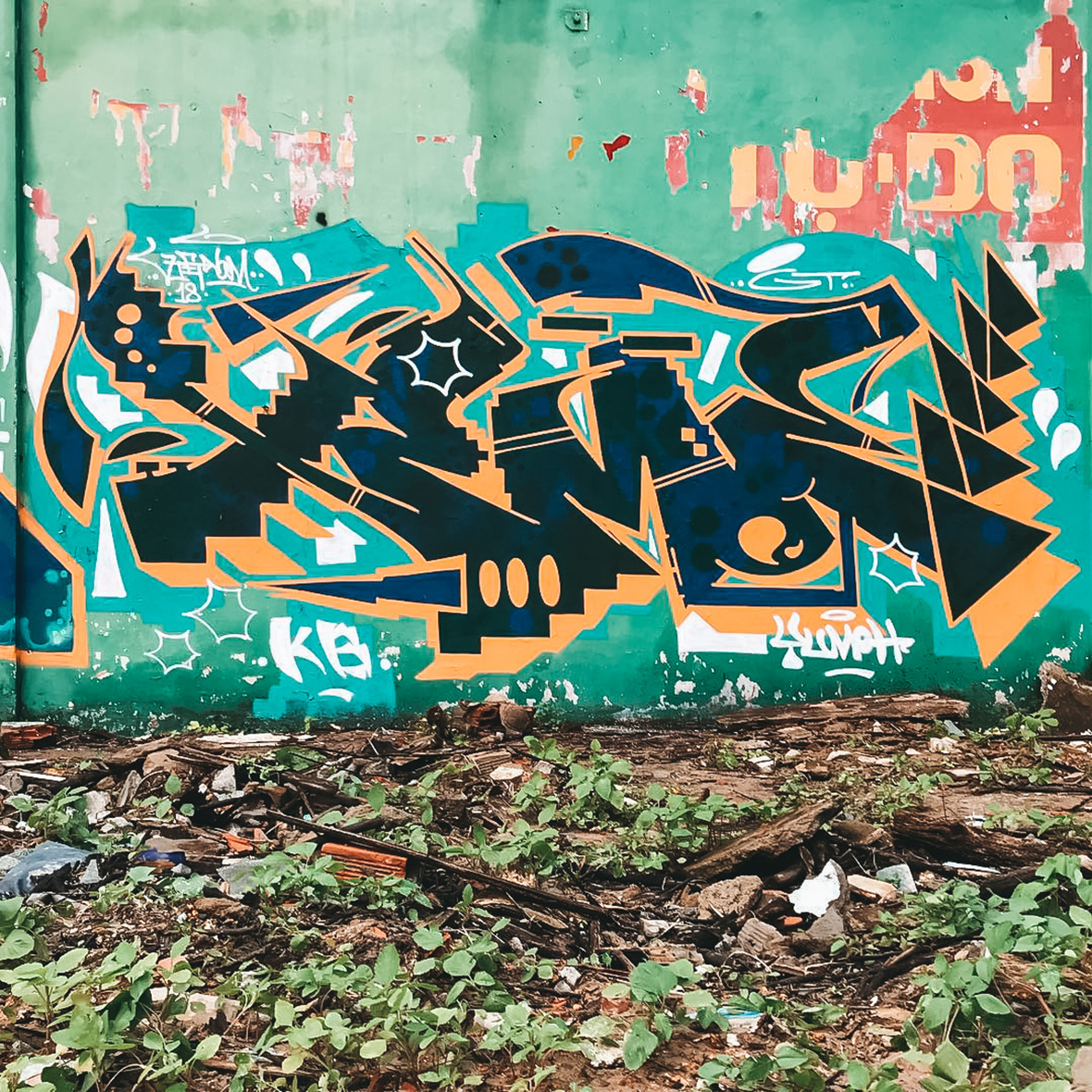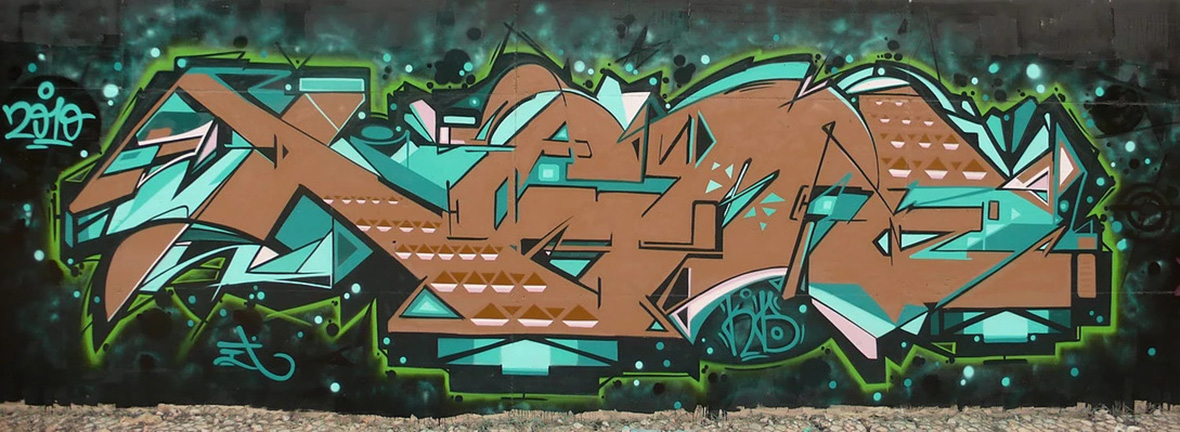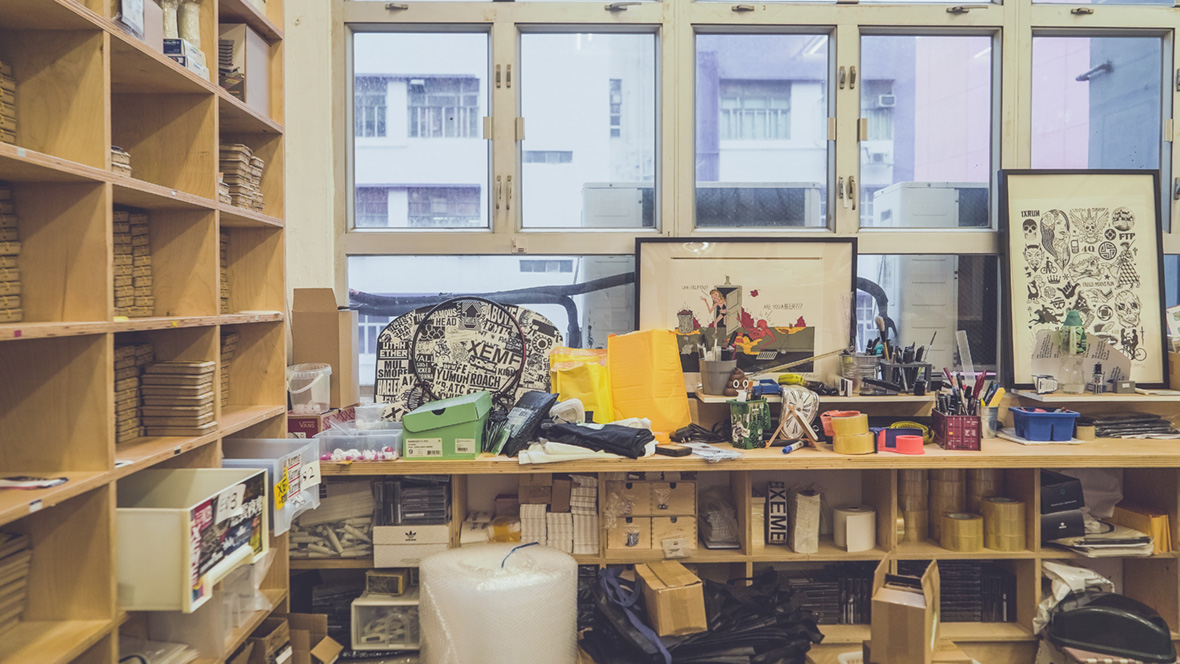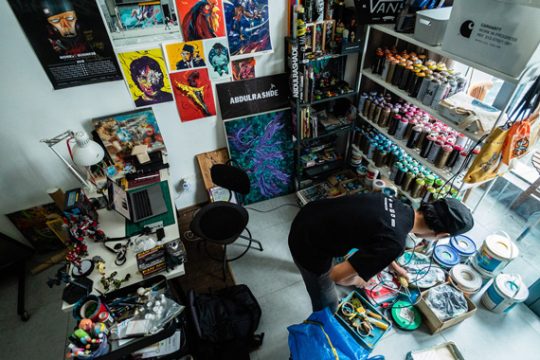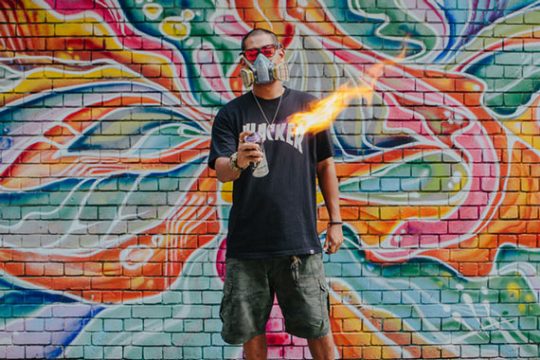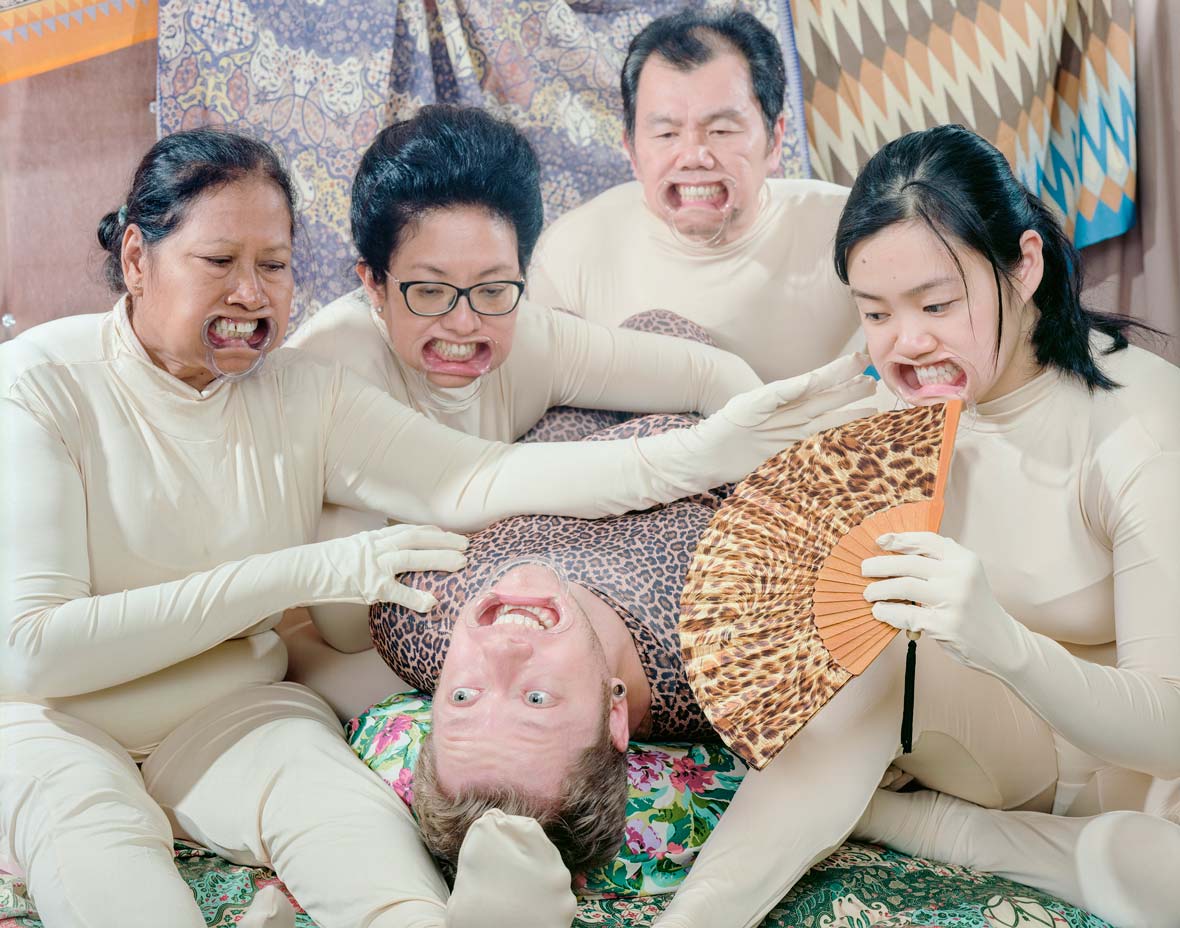
Surrealist images dealing with real-world issues. Joyous pictures confronting difficult subjects. Photographs resembling digital collages. Leonard Suryajaya‘s artwork is a study in self-love buffeted by confusion and conflict. His photos are full of intricate details and mesmerizing subject matter. These large format film photographs are drenched in colorful costumes and linens, arrays of fluttering paper cut-outs, powerful locations, and a heavy dose of humor. They balance opposing elements to create tension and mystery. And there are clearly stories within all the symbolism and otherworldliness, which compels viewers to decode the images, making his work almost participatory.
Suryajaya, who currently lives and works in Chicago, was raised in Indonesia, where he was a minority three times over, in race, sexual preference, and religion. He grew up ethnically Chinese in a majority Malay population, queer in a conservative town, and Buddhist at Christian schools in an overwhelmingly Muslim country. Although things have improved for Chinese Indonesians since he was a child, when 1,000 Chinese were killed in riots in 1998, discrimination there remains. And despite going to a school surrounded by kids of his own ethnicity, he was still taunted by his classmates, who called him and his family “false idols.” Recently, his home country has been retreating into conservatism in terms of religion, sexuality, and more—a fact that has made him feel increasingly distant from home.
超现实主义的影像,寓意现实世界的种种问题;滑稽风趣的画面,碰撞出复杂的主题。Leonard Suryajaya 的作品看上去像数字拼贴而成的照片,探讨了夹杂着混乱与冲突的自我怜爱。在他的照片里,充满了错综陈杂的细节和引人入胜的主题。那些大格式的胶底照片被五颜六色的服饰和亚麻布填满,在漫天飞舞的剪纸,以及充满视觉冲击力的布景背后,透露出一股浓浓的幽默感。平衡与对立的元素,营造出紧张和神秘的气氛。显然,所有这些象征主义和精神内涵都在明确地讲述着每一个故事,迫使观众对画面进行解码,也因而使得他的作品具有很强的代入感。
Suryajaya 目前在芝加哥工作和生活,而在他的出生地印度尼西亚,无论从种族、性取向还是宗教,他都可以算得上是 “少数派”。拥有华人血统的他,在一个主要由马来人构成的保守小镇中长大,作为佛教徒,他曾就读于一所基督教学校,而马来西亚却又是一个以穆斯林为主导的国家。在他小时候,印尼华人备受歧视,在1998 年曾有 1000 名华人在骚乱中丧生。现在,虽然情况已经有所改善了,但当地对华人的歧视依然存留。尽管他是在华人学校上学,还是会常常被嘲笑为 “false idol” (虚假的偶像)。近年来,印尼在宗教、性取向、和其他方面开始再度退回到保守主义,这让他感到自己与这个国家越来越疏远。
Only when Suryajaya moved to California in 2006 to study art did he begin to feel free enough to explore his identity. And although in the US he was able to open up, it wasn’t the escape he imagined. “Xenophobia, discrimination, and attitudes of social/cultural superiority are present everywhere,” he says. “To say I was surprised is an understatement.” He directly tackles this difficult terrain in his work, especially the ongoing False Idol series, which he describes as “a body of work tracing my immigration process through my same-sex marriage. The permanent residence application takes about four to five years, so I plan on concluding the series when I find out if I get to stay in America or not.”
直到 2006 年,Suryajaya 搬到加利福尼亚修读艺术专业,他才得以真正自由地探索自己的身份。虽然在美国他能够更加开放,但他并未获得想象中的解放。“无论在哪里,都充满着各种仇外心理、歧视和社会/文化优越感。”他说,“这是我完全始料不及的。”他将这些复杂的问题直接诉诸于作品中,特别是他正在创作的《False Idol》系列。他将这个系列描述为 “记录我通过同性婚姻移民整个过程的作品。申请永久居留大约要四到五年,所以我打算在确定自己能否留在美国之前完结这个系列。
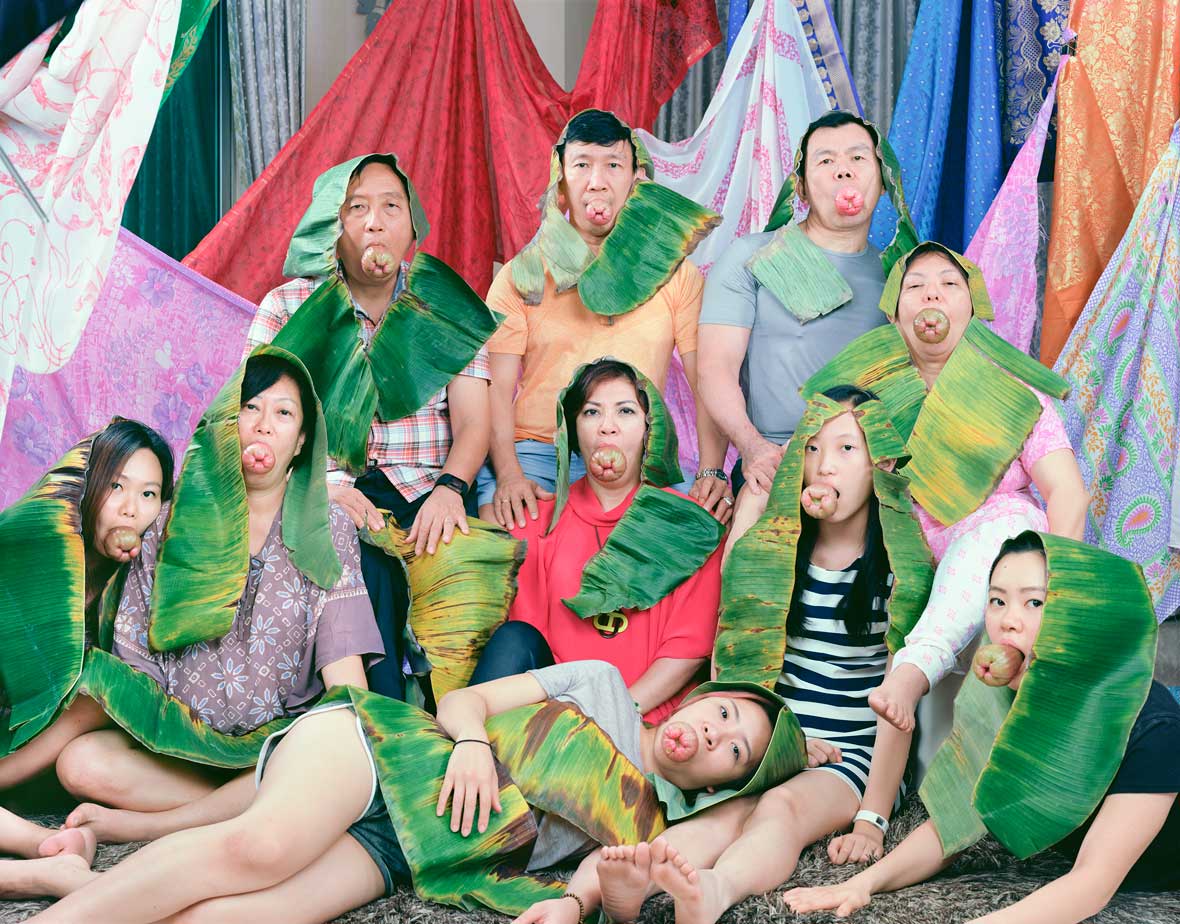
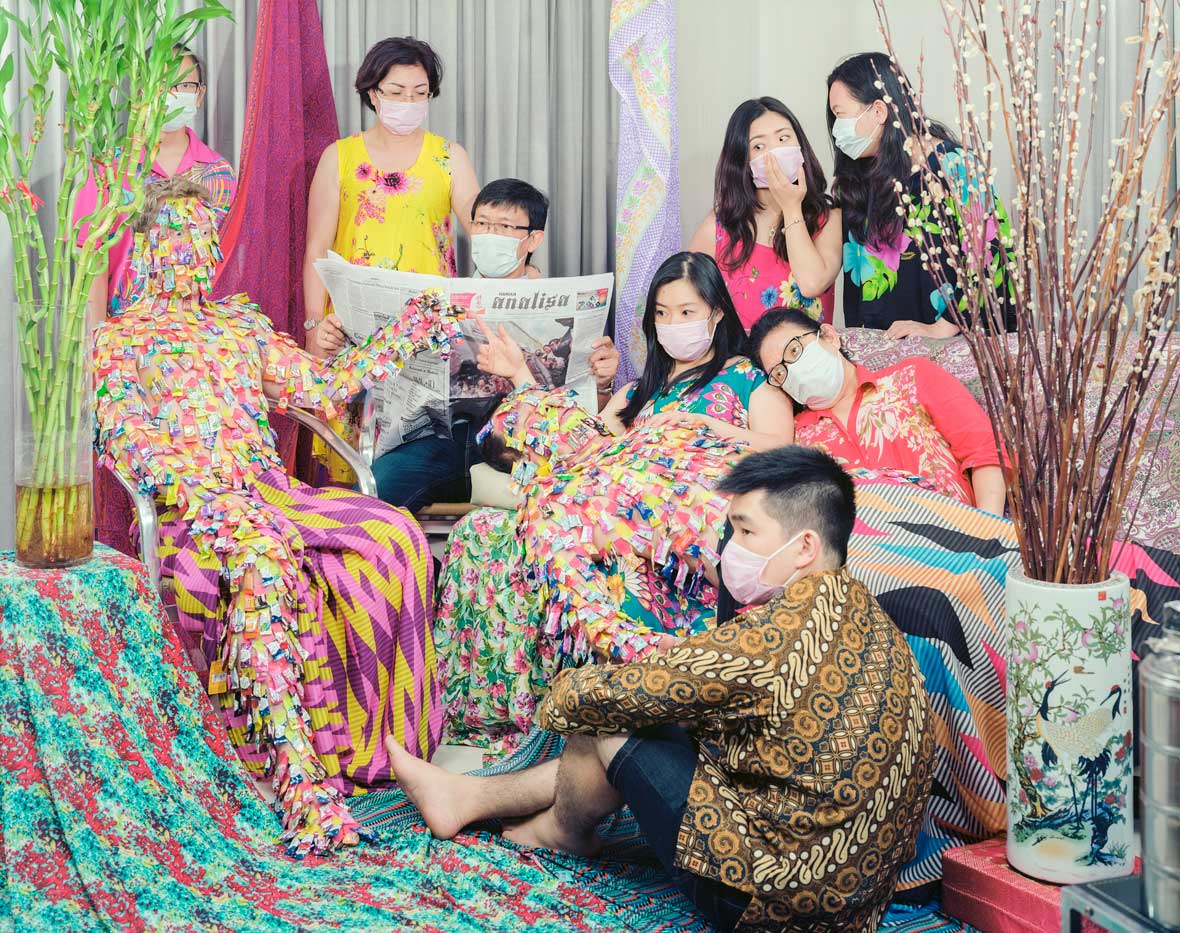
He didn’t hit his stride until he came out to his family eight years after arriving in the US. “For my growth as a human being and an artist, being able to admit to my mother that I was queer was really what I needed,” Suryajaya explains. “Since then, I’ve become more adventurous, celebratory, conflicting, and layered in my visual language, as opposed to trying to make things simpler by sweeping them under the rug.” His husband is one of the most frequently recurring models in his work, which also includes family, friends, colleagues, and lovers.
在美国的第八个年头,他向家人出柜,此后,他的创作获得了真正的释放。Suryajaya 解释说:“无论是作为一个人,或是作为艺术家,想要真正成长,我就必需向我的母亲承认同性恋的身份。从那时起,我的视觉语言就变得更大胆,风格更活泼,也有更多碰撞和层次,而不再是一味对所有事情避而不谈。” 除了他的丈夫,家人、朋友、同事和前任也常常作为模特出现在他的作品里。
One piece, Good Neighbors, finds him posing with another artist in comical polka-dot face paint as part of a response to racist incidents he encountered among his colleagues and followers. In his characteristic way, Suryajaya uses levity to engage viewers on a volatile subject: “A simple way to describe that piece is that I’m saying, ‘Hi guys, we come in peace, bearing flowers despite looking funny.’”
在他的作品《Good Neighbors》(好邻居)中,他与另一位面上画着滑稽波点的艺术家合影,以此回应他在同事和粉丝中遇到过的种族歧视事件。Suryajaya 以他独特的方式,通过搞怪,让观众探讨一个短暂的主题:“简单来说,那幅作品其实就我在说,‘嗨,虽然我们看起来很搞笑,但我们是为和平而来,还带着花呢。’”
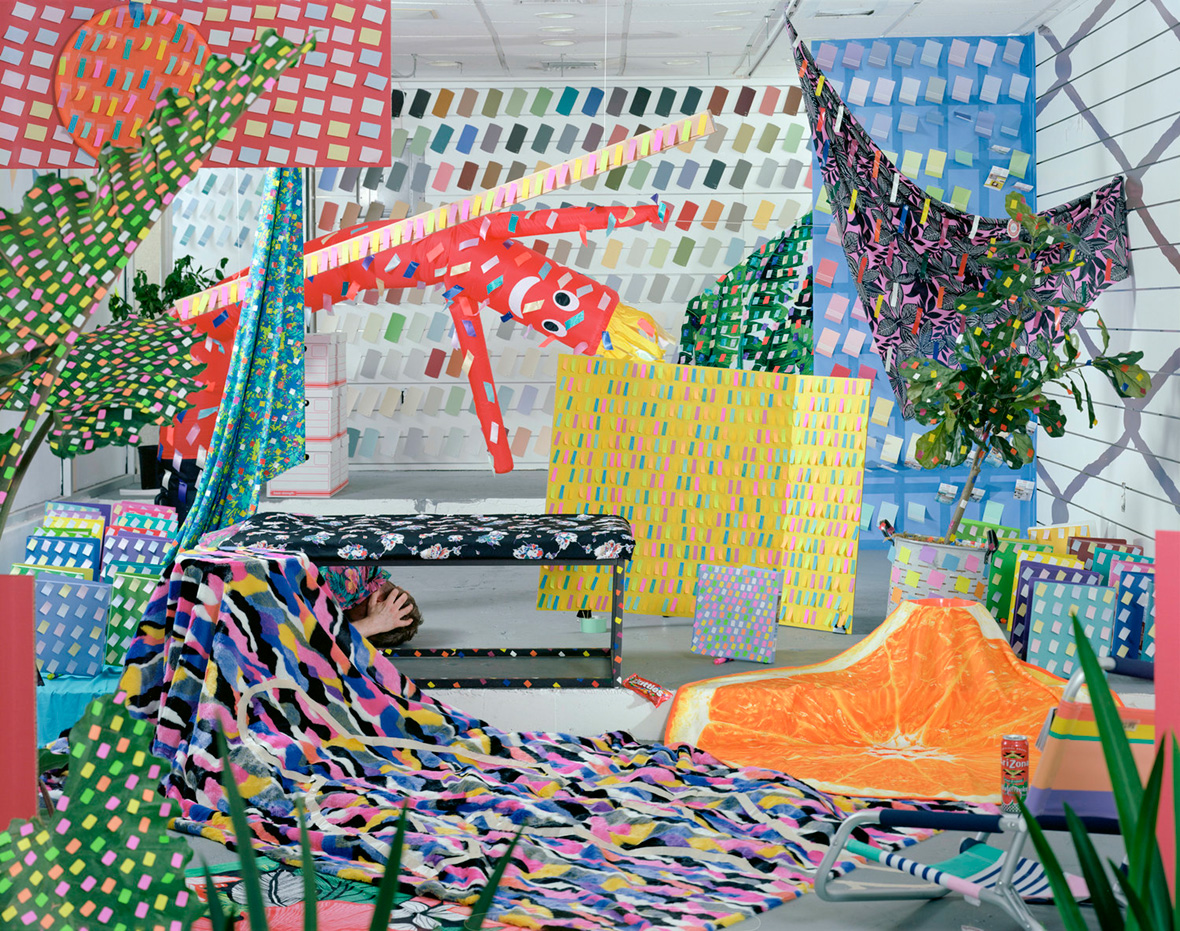
Other pieces depict women of various ages and ethnicities from his hometown in Medan, Indonesia, including his family members, wearing different costumes and staged in ritualistic poses. “The goal here was to show how the ideals of femininity can vary, particularly within Indonesia. Acknowledging that women are as powerful as men, if not more powerful, is important to me. I respect women, and try to acknowledge that I have more privilege as a male-bodied person.”
在其他作品中,他在家乡棉兰(Medan)拍摄了各种年龄和种族的女性,包括了他的家人。她们穿着不同的服饰,摆着充满宗教意味的姿势。“这些作品的目的是为了展示不同气质的女性,特别是在印度尼西亚。承认女性跟男性一样强大,抑或甚至更强大,对我来说很重要。我尊重女性,但也不得不承认,作为男性,我确实比她们享受到了更多特权。”
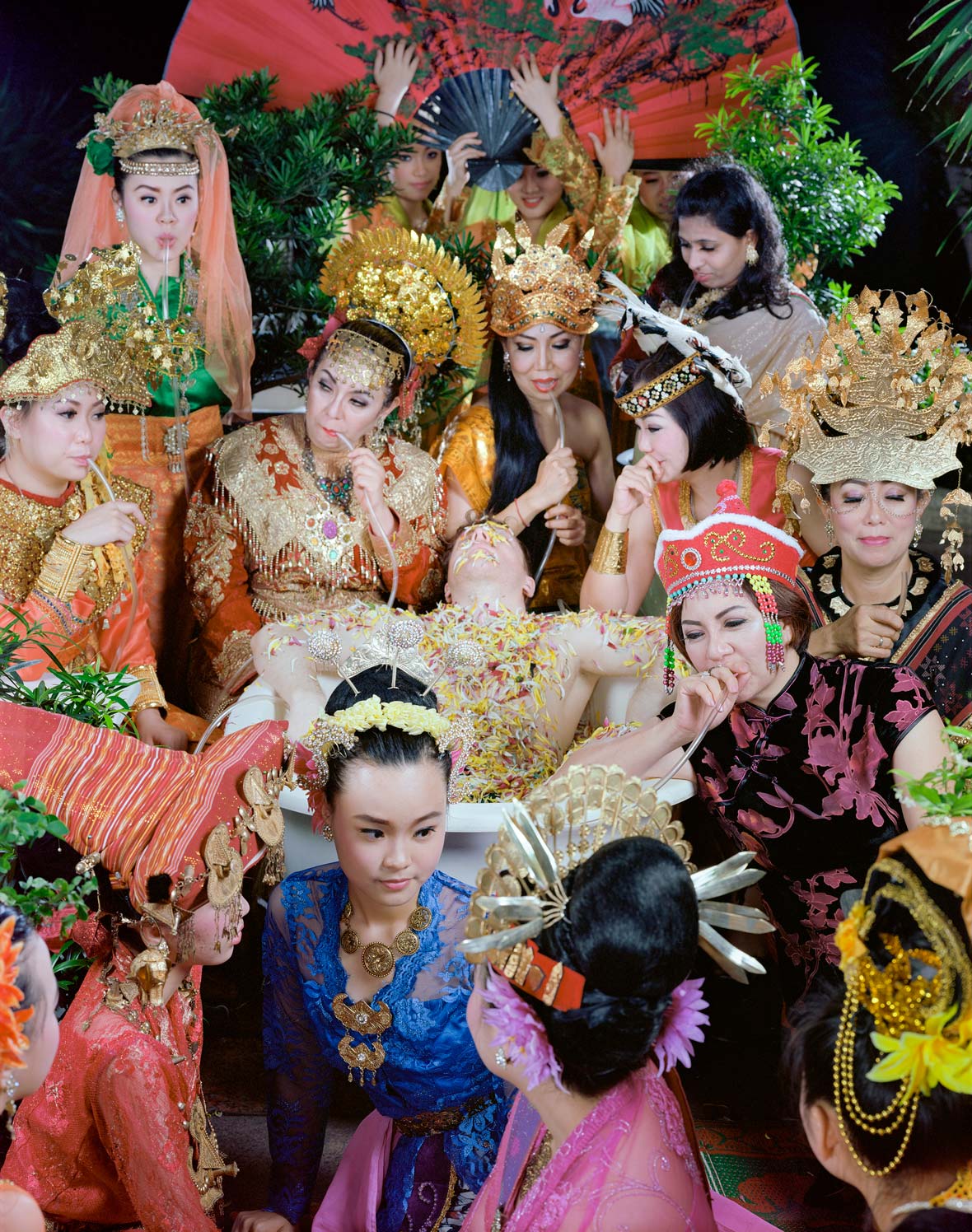
But for all his social commentary and visual vocabulary rooted in Indonesian cultural signifiers, all Suryajaya really asks is that viewers abandon any preconceptions and be honest with themselves. You don’t need to understand it all to identify with it. “All I remember from my time in Indonesia is wanting to run away,” he says. “It would be close-minded to think I could only be understood by my culture specifically because my experiences have shown me that my cultures rejected me. The whole point is to pick up on what interests you initially and then spend time deciphering and seeing different narratives and possibilities. The aim for me is to be able to connect as humans.”
但是,尽管他所有的社会观点和视觉语言都植根于印尼文化符号,但 Suryajaya 希望观众能摒弃所有成见,并诚实地解读。你并不需要熟悉这些文化才能理解他的作品。 “我在印度尼西亚的时候,一心只想要逃跑。”他说,“如果以为只有懂印尼文化才能理解我的作品,那是一种狭隘的想法。因为经历让我明白,我被自己的文化拒绝。重要的是,了解最初吸引你的点,然后花时间去解读,洞察不同的叙述和可能性。我的目标,是希望被作为一个人来解读。”
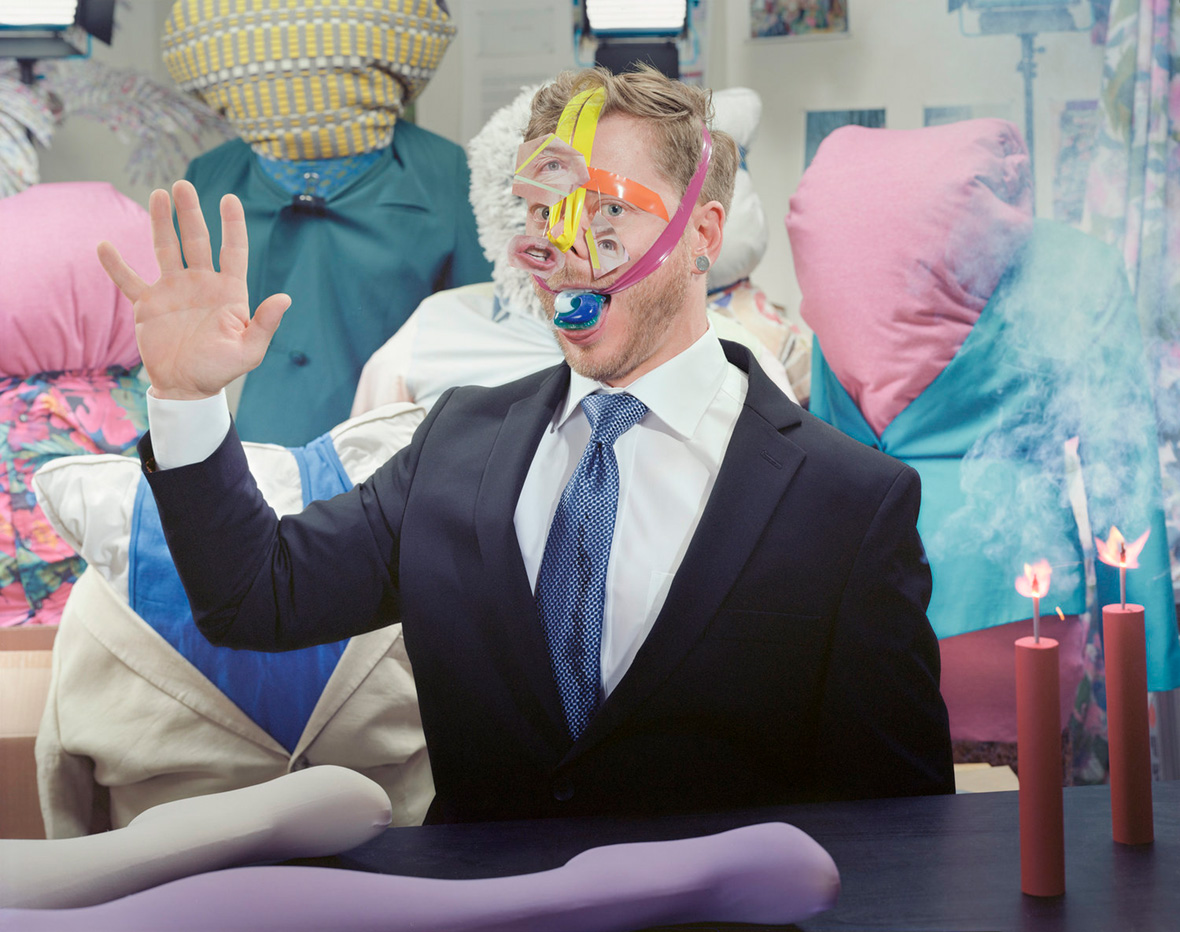
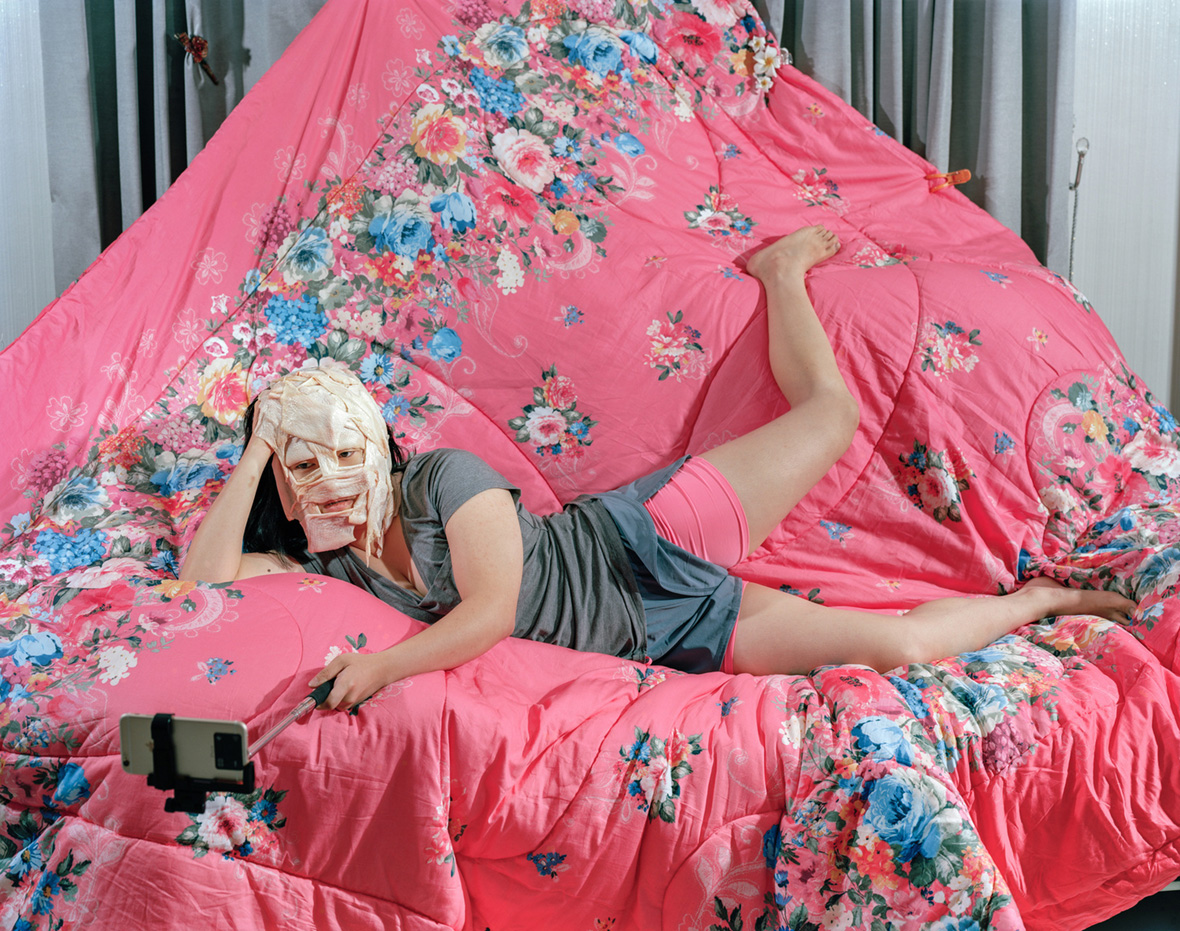
Like our stories? Follow us on Facebook and Instagram.
Website: leonardsuryajaya.com
Instagram: @leonardsuryajaya
Contributor: Mike Steyels
Chinese Translation: Olivia Li

